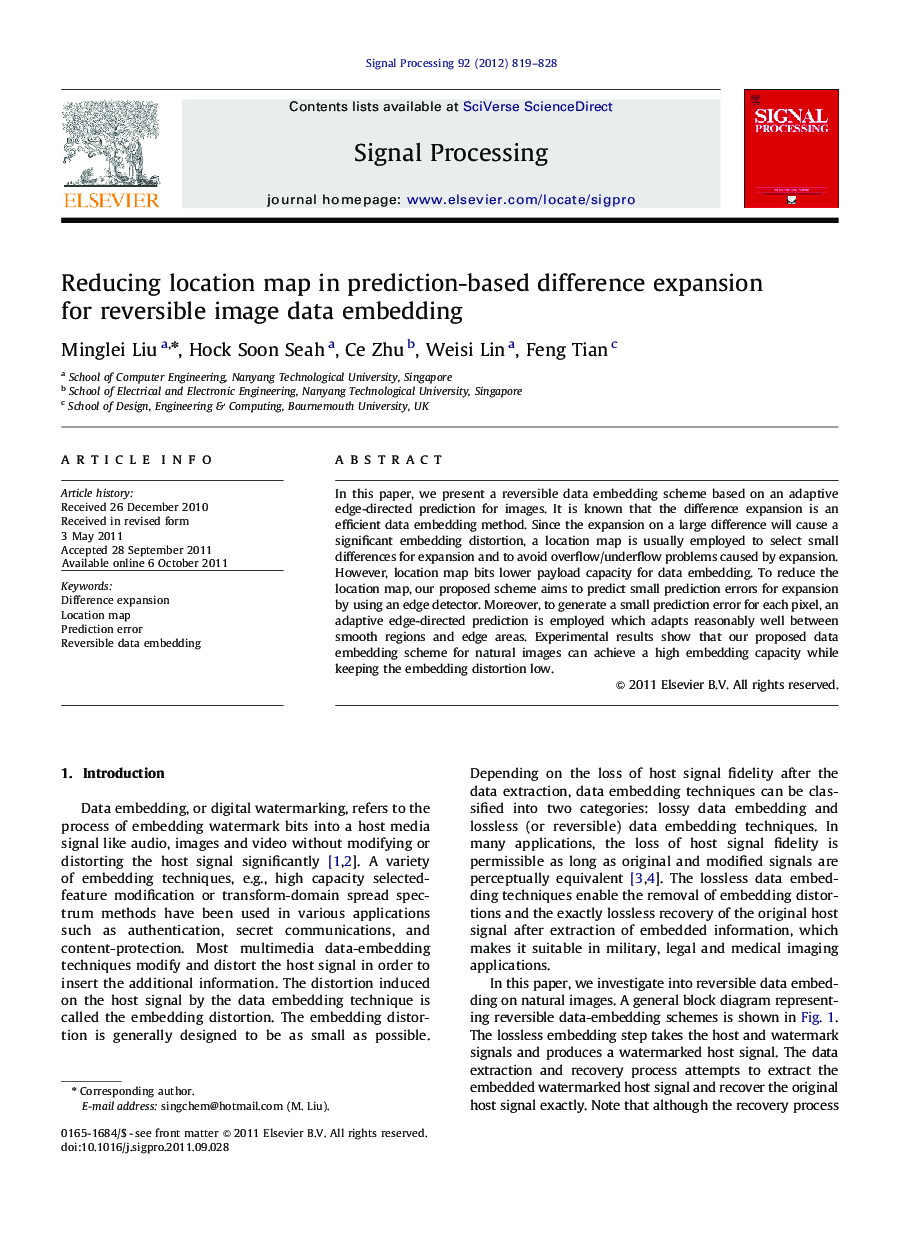| Article ID | Journal | Published Year | Pages | File Type |
|---|---|---|---|---|
| 563446 | Signal Processing | 2012 | 10 Pages |
In this paper, we present a reversible data embedding scheme based on an adaptive edge-directed prediction for images. It is known that the difference expansion is an efficient data embedding method. Since the expansion on a large difference will cause a significant embedding distortion, a location map is usually employed to select small differences for expansion and to avoid overflow/underflow problems caused by expansion. However, location map bits lower payload capacity for data embedding. To reduce the location map, our proposed scheme aims to predict small prediction errors for expansion by using an edge detector. Moreover, to generate a small prediction error for each pixel, an adaptive edge-directed prediction is employed which adapts reasonably well between smooth regions and edge areas. Experimental results show that our proposed data embedding scheme for natural images can achieve a high embedding capacity while keeping the embedding distortion low.
► We present a reversible data embedding scheme based on difference expansion. ► We use an adaptive edge-directed prediction to generate small prediction errors. ► Edge detectors are used to reduce location map bits. ► Less location maps may improve PSNR-payload performance and justified by experiments.
